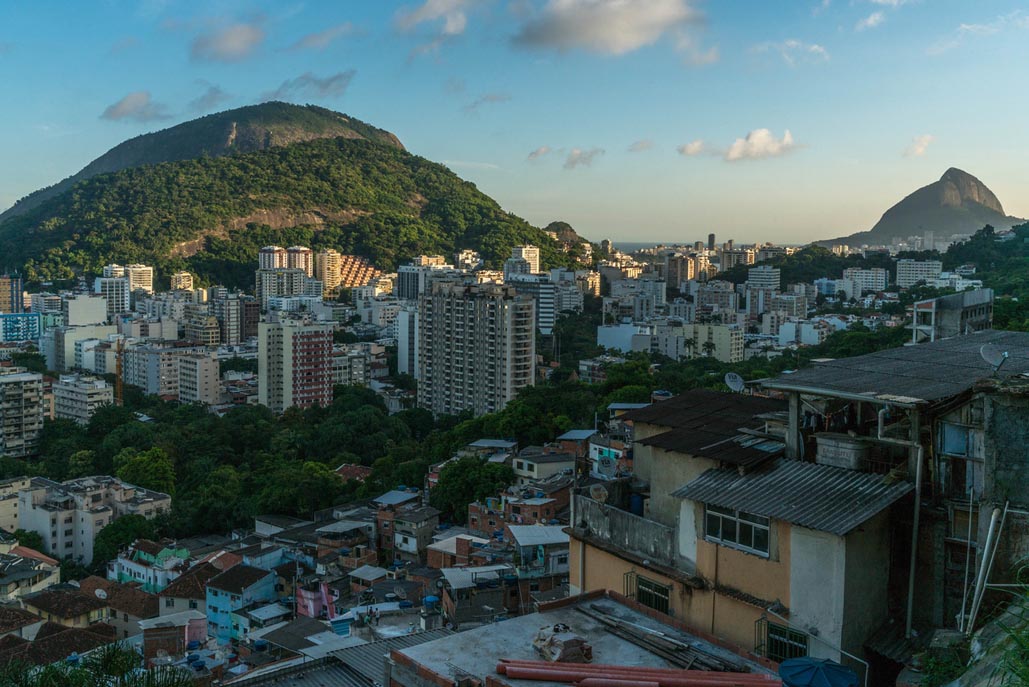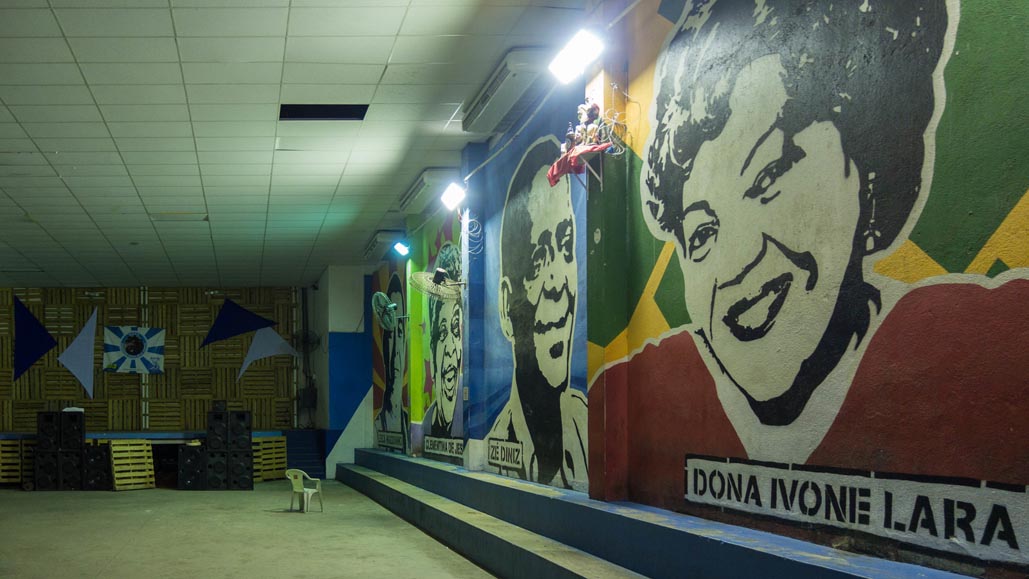Summary
- Introduction to Rio’s favelas and personal experiences.
- Understanding the favelas and their history.
- Safety considerations while visiting the favelas.
- Insights into the Santa Marta Favela.
- Responsible tourism tips for visiting favelas.
I first became interested in visiting Rio favelas when Dave was working on The Hulk in 2007. Some of the cast and crew flew down to Rio to film the opening scene where Edward Norton was chased through the slums of the city.
Pacifying Favelas in Rio de Janeiro
When watching the colorful community built on the side of a steep hill displayed on the big screen TV, I was intrigued to find out more. However, Dave and I have never been ones for slum tourism.
We spent three months in India and never visited a slum. We’ve traveled to South Africa twice and refused to gawk at people living in the poor shantytowns. So why are Rio’s favelas different? The answer is they aren’t.
It’s more a reflection of our mindset and the changing society.
Over the years, we have learned that when tourism is approached responsibly and carefully, it can benefit poorer communities. However, this must be executed properly.
For a first-hand perspective, read “Should you Feel Badly About Visiting Rio’s Favelas?”
When our friend Jason, who owns and operates Toronto’s Tour Guys, suggested we connect with his friend Luiz from Rio’s Urban Adventures, we knew this would be the right way to explore the city’s favelas.
Luiz is from Rio and knows the people of the Santa Marta Favela.
As we walked through the narrow alleyways of the community with him, people constantly stopped Luiz to say hello and engage in conversation.
He is friends with these individuals, and they gladly welcome him bringing tourists into their community to foster understanding of their way of life.
What Are Rio’s Favelas?
To genuinely understand life in Rio’s favelas, engaging with the locals is essential.
A favela refers to a shantytown or slum in Brazil. Over 1.5 million people live in nearly 800 favelas in Rio, constituting one-sixth of the population. It’s possible that your bartender, housekeeping staff, or even the front desk reception of your hotel resides in one of these communities.

Brazil is evolving. As host of the 2014 World Cup and the 2016 Summer Olympics, authorities have made significant efforts to change the perception of Rio as lawless and dangerous.
Historically, favelas garnered a reputation for being controlled by gangsters and drug lords, making them dangerous and often off-limits to outsiders.
Today, nearly forty favelas have undergone pacification by police units.
Although there remains progress to be made, this initiative marks a positive start. Most residents are not involved in the drug trade and lead normal lives.
While visiting Rio, numerous locals shared with us that “favela” is considered a derogatory term, and the community is moving towards a different portrayal.
After exploring the Santa Marta favela, I comprehend why they wish for a term change.
The term favela is associated with violence, gangs, and shootouts. The community we explored had children enjoying outdoor play, parents returning from shopping, and community centers abuzz with kids learning to dance.
Are Rio’s Favelas Safe?
The most common question we received during our visit to Rio was, “Do you feel safe?” While Rio still grapples with corruption, as do many urban centers worldwide, we felt secure.
We strolled through the streets at night, enjoyed morning walks on the beach, and celebrated our time in Rio.
We avoided dark alleys and refrained from wandering near the water after sunset. By maintaining situational awareness, as one would at home, we had a safe and pleasurable experience in Rio.
Visiting a pacified favela located within the town center, near the beaches and Christ the Redeemer, as well as in suburban areas close to Olympic sites, is generally safe.
Understanding which favela to visit is crucial, and therefore, we highly recommend participating in a guided tour.
During our time in the Santa Marta favela, Luiz assured us that we were probably safer than we would be anywhere else in Rio, with minimal worry about theft or violence.
Santa Marta Favela
The Santa Marta favela is among the most renowned favelas in Rio, having served as a filming location for Michael Jackson’s video, “They Don’t Care About Us.”
As we ascended through the favela, we encountered a square with a statue dedicated to Michael Jackson, accompanied by a shop screening his video.
Since the 1990s, the community has experienced significant transformation.
While viewing the video, Luiz emphasized that the prior wooden shacks on stilts and dilapidated streets have been replaced with painted concrete houses and established walking paths.
Today, the Santa Marta favela has evolved into a vibrant community, showcasing shops, businesses, and essential services like electricity and trash collection.
A crucial component of Santa Marta’s infrastructure is a funicular that transports residents, construction materials, heavy items, and waste up and down the steep hillside.
Want to learn more about life in favelas post-pacification? Check out “Brazil’s Makeover of Rio’s Slums” by Smithsonian.
Why Are Favelas of Rio Located on Hills?
Rio is a mountainous city. At the turn of the century, navigating higher terrains was challenging, reminiscent of the early settlements in Hong Kong.
In Hong Kong, the initial shantytowns have now transformed into the upscale area of SoHo.
Similarly, Rio’s favelas began as makeshift shelters for former soldiers who occupied a hill known for its favelas plant species.
The soldiers dubbed it Favela Hill. Subsequently, when Brazil abolished slavery, many formerly enslaved individuals had nowhere to reside, prompting them to erect shacks on hillsides surrounding the city center.
As more individuals migrated from rural Brazil to cities like Rio, the impoverished population also settled in the favelas.

Today, many favelas occupy prime real estate. Upscale homes often coexist with these impoverished neighborhoods.
During our stay at the Sheraton Rio on Leblon Beach, we looked out directly at a large favela perched on the seaside, offering stunning views of the city.
Favelas often have the best vistas. I mentioned to Dave that as the city’s development continues, it is likely residents will be displaced to make way for luxury real estate.
Similar to many impoverished areas globally, the drug trade infiltrated and overran favelas, where drug lords exerted control in exchange for protection.
Through the pacification process, armed police are striving to erase the violence, leading favelas to become increasingly integrated within the larger community.
Nevertheless, as I reflect on this, I find myself questioning the term “pacification.”
Are authorities merely enforcing a blanket removal? Listening to filmmaker Dan Jackson discuss his documentary “In the Shadow of the Hill,” raises concerns.
While favelas become safer for tourism, one cannot ignore the potential costs to its residents. In his documentary, Dan notes that police may be causing more disappearances than fatalities to keep their death statistics favorable.
This is indeed something to ponder, isn’t it?
I do not claim to be a political analyst and prefer to refrain from delving deeper into such matters, yet these questions merit consideration.
While visiting the Santa Marta favela, we indeed felt secure yet also somewhat uneasy. At one point, as I filmed the vibrant houses, a group of children yelled something at me.
My local guide scrutinized my camera, and Luiz advised me to delete the last clip I had just captured. I had no idea what I had recorded—I hadn’t even noticed the children standing next to me on the right.
Crime and Corruption in Rio Favelas
I was filming a block of houses that had recently been decorated. However, crime and corruption persist.
Some people might assert that visiting a favela independently is perfectly fine.
Though seasoned travelers may feel comfortable, I believe it is crucial to engage a knowledgeable guide familiar with the area’s boundaries and expectations.
A local guide will provide insightful historical context and shed light on both progress and challenges. We appreciated Luiz’s honesty as he shared the issues and positive changes occurring.
He shared how a certain building used to serve as the drug lord’s headquarters, yet today it hosts a community center for children.
Playing football with two boys who seemed happy and well-adjusted, he revealed that their father, a drug lord, was killed by police in 2008. This was both enlightening and heartbreaking.
The inhabitants of Rio’s favelas are grappling with poverty, violence, and corruption.
As one article I read articulated, “favela residents are caught between drug traffickers on one side and corrupt politicians and security forces on the other.”
Yet, life is improving, and I can only hope that this momentum persists, helping Brazil maintain its status as part of the BRIC countries (Brazil, Russia, India, China) anticipated to lead the 21st century.
Brazil is currently experiencing political volatility, but let us hope for a positive outcome. The eyes of the world will be on Rio this summer, and I eagerly anticipate witnessing its growth.
Responsible Tips for Your Favela Tour
- Choose a walking tour, such as Urban Adventures. Avoid those that merely pass through by bus or car; you must show respect for the community and learn about it—if not, why go?
- Avoid giving candy or tips to children. Urban Adventures encourages visitors to refrain from distributing charitable items. They want children to focus on education.
- Refrain from photographing inside homes.
- Do not obstruct paths used by locals; they navigate these steep stairs daily, and the paths are often narrow—stay out of their way.
- Utilize local guides. Urban Adventures has their guides, but once you enter the favelas, a local resident will join you, providing firsthand insight and a connection to the community.
- Purchase local arts and crafts to support the local economy. I cherished the necklaces I bought in the favela and ensured I purchased drinks during my tour.
Travel Planning Resources
Looking to plan your next trip? Consider utilizing these valuable resources that have been tried and tested.
Find Your Flights: Start your planning by locating the best flight deals on Skyscanner. We have relied on them for years due to their competitive offerings.
Find your Hotel: Explore the best prices on hotels through these two providers—if you’re in Europe, use Booking.com, and for other locations, opt for TripAdvisor.
Discover Apartment Rentals: Find the most affordable apartment rental options on VRBO.
Plan for Travel Insurance: Don’t leave home without it. Here’s what we recommend:
- Safety Wing – for occasional travelers.
- Medjet – for global air medical transport and travel security.
Book Your Activities: For walking tours, skip-the-line tickets, private guides, and more, we recommend Get Your Guide.
Need further assistance in planning your journey? Visit our Resources Page, where we highlight trustworthy companies we rely on while traveling.





